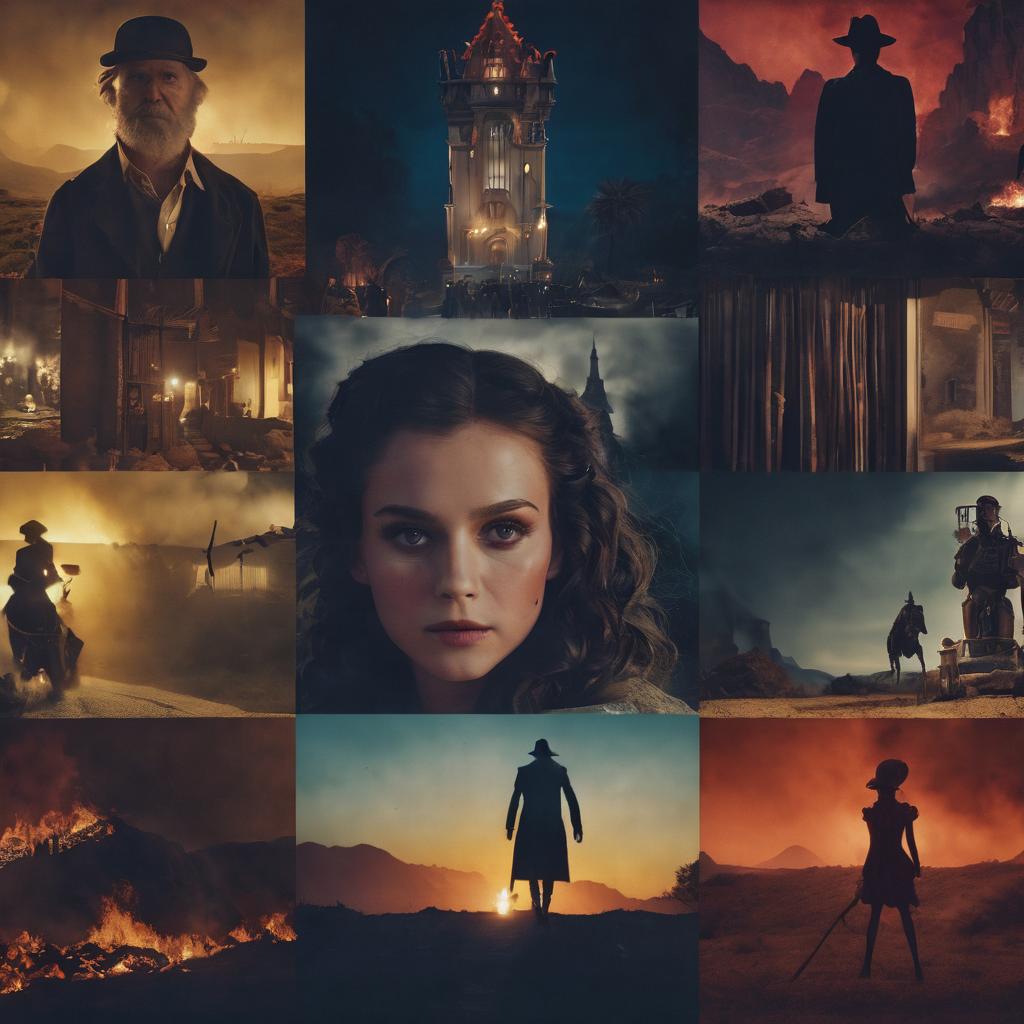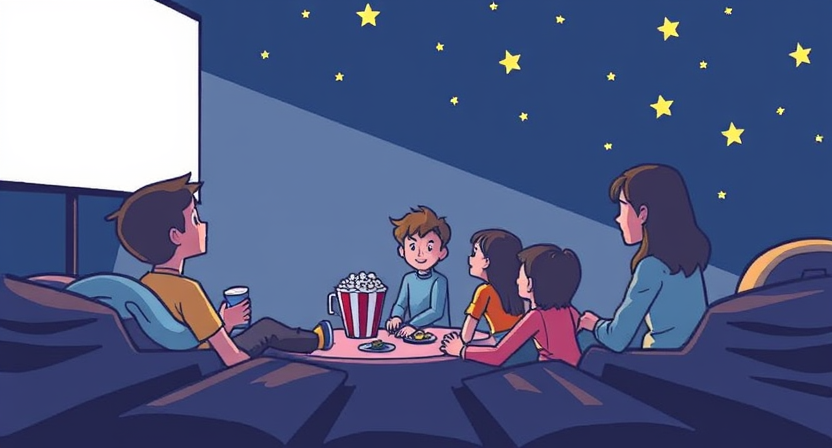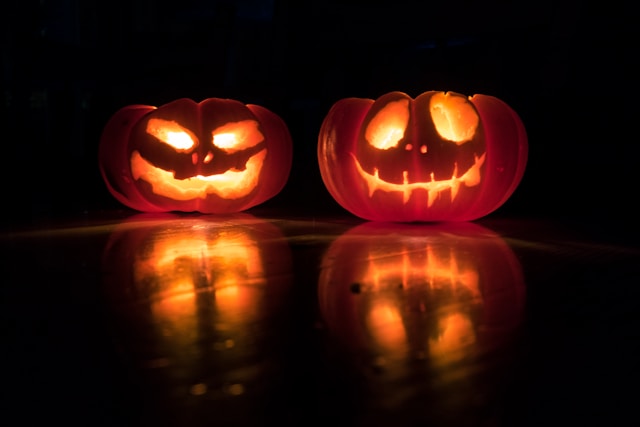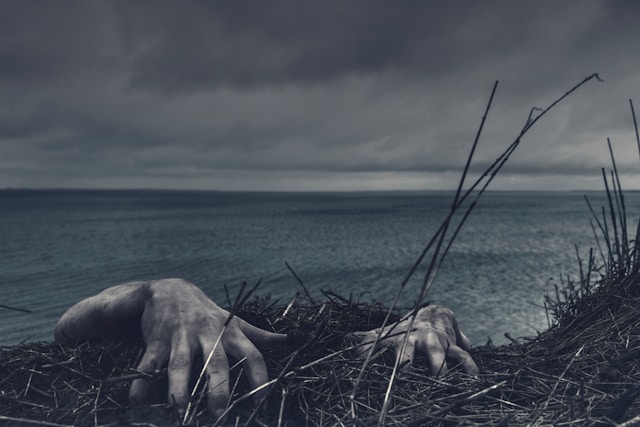Early Beginnings of Horror Cinema
The enigmatic origins of horror cinema can be traced back to the dawn of film history, a time when creativity and experimentation collided in a burst of macabre inspiration. In the late 19th and early 20th centuries, filmmakers delved into uncharted territories, exploring the dark recesses of human imagination with an insatiable curiosity.
From this tumultuous period emerged the first inklings of what would become a defining genre in cinematic history. Through a haze of uncertainty and trepidation, these visionary creators wove tales that blurred the lines between reality and nightmare, pushing the boundaries of visual storytelling to their limits.
As silent horror films began to emerge in the early 1900s, a sense of unease permeated the air. Filmmakers like Georges Méliès and F.W. Murnau embarked on daring experiments, utilizing shadows and light to craft chilling narratives that lingered in the minds of audiences long after they had left their seats. In this era of innovation and fear-inducing artistry, horror cinema found its voice – or lack thereof – setting off on a twisted journey towards global fascination and eternal intrigue.
• The enigmatic origins of horror cinema can be traced back to the dawn of film history
• Filmmakers in the late 19th and early 20th centuries delved into uncharted territories
• Silent horror films began to emerge in the early 1900s, creating a sense of unease
• Visionary creators like Georges Méliès and F.W. Murnau utilized shadows and light to craft chilling narratives
The Birth of Silent Horror Films
The emergence of silent horror films in the early 20th century was a perplexing and eerie phenomenon, leaving audiences in a state of unease and fear. Without the comfort of spoken dialogue, these movies utilized expressive visuals and haunting music to create a chilling atmosphere that seemed to burst forth from the screen. Visionaries like Georges Méliès and F.W. Murnau pushed the boundaries of storytelling with their innovative use of shadow play and atmospheric lighting, crafting macabre tales that lingered in the minds of viewers long after the credits rolled.
These pioneering silent horror films laid a mysterious foundation for the genre, introducing audiences to iconic monsters and supernatural themes that would dominate future silver screens. From blood-sucking vampires to mind-bending psychological thrillers, filmmakers explored a bewildering array of horror subjects, demonstrating the boundless potential of cinema in evoking fear without uttering a single word. The birth of silent horror films marked an enigmatic beginning to a cinematic journey that continues to bewitch and enthrall audiences even today.
• The emergence of silent horror films in the early 20th century left audiences in a state of unease and fear.
• Visionaries like Georges Méliès and F.W. Murnau utilized expressive visuals and haunting music to create a chilling atmosphere on screen.
• These pioneering filmmakers pushed the boundaries of storytelling with innovative use of shadow play and atmospheric lighting.
• Silent horror films introduced audiences to iconic monsters and supernatural themes that continue to dominate the genre today.
• Filmmakers explored a wide array of horror subjects, showcasing the boundless potential of cinema in evoking fear without spoken dialogue.
The Impact of German Expressionism on Horror Movies
The enigmatic and tumultuous world of German Expressionism left an indelible mark on the evolution of horror films in the early 20th century. Visionaries like Robert Wiene, F.W. Murnau, and Paul Leni harnessed the unconventional techniques of this avant-garde movement to craft a sinister and distorted visual aesthetic that would pave the way for the eerie and psychologically unsettling essence of many future horror flicks. Through their use of stark illumination, exaggerated set constructions, and uncanny makeup effects, they forged a unique visual lexicon for horror cinema that distinguished it from all other genres.
A prime exemplar of German Expressionism’s influence on horror movies is epitomized in the timeless classic “The Cabinet of Dr. Caligari” (1920), helmed by none other than Robert Wiene himself. The film’s warped scenery, angular light-and-shadow play, and overall sense of impending doom conjured a phantasmagorical ambiance that struck a chord with viewers and critics alike. This pioneering work not only cemented German Expressionism’s impact on horror cinema but also established an elevated benchmark for aspiring filmmakers seeking to instill unease and dread in their cinematic creations.
• The use of stark illumination in German Expressionist films created a sense of foreboding and mystery that became a hallmark of horror movies.
• Exaggerated set constructions added to the surreal and nightmarish quality of these films, influencing the production design of future horror flicks.
• Uncanny makeup effects used in German Expressionist cinema helped create iconic and terrifying characters that continue to inspire modern horror filmmakers.
• “The Cabinet of Dr. Caligari” remains a seminal work in the horror genre, showcasing how German Expressionism can effectively evoke fear and suspense through its visual storytelling techniques.
The Transition to Sound in Horror Films
The emergence of sound technology in the realm of cinema brought forth a momentous transformation within the horror genre. As synchronized sound made its debut in the late 1920s, filmmakers were suddenly bestowed with the ability to plunge audiences into an entirely novel auditory realm. This revolutionary development paved the way for dialogue, music, and sound effects to be seamlessly integrated into horror films, intensifying the sense of dread and apprehension.
However, this transition to sound also presented a myriad of perplexing challenges for directors within the horror genre. The familiar reliance on atmospheric visuals and intertitles from the silent era had to undergo a complete reimagination with the incorporation of sound. Filmmakers now found themselves tasked with ingeniously utilizing sound as a tool to cultivate suspense and evoke fear, as these auditory elements held newfound significance in shaping the overall ambiance of horror films.
• The integration of dialogue allowed for more nuanced character development and interaction within horror narratives.
• Sound effects became a crucial component in creating tension and jump scares, heightening the audience’s sense of unease.
• The use of music in horror films evolved to become an integral part of setting the mood and manipulating emotions, from subtle undertones to chilling crescendos.
The Golden Age of Universal Horror Movies
The 1930s and 1940s at Universal Studios were an enigmatic time, a period shrouded in mystery and fascination within the realm of horror cinema. It was during this era that the studio unleashed a torrent of iconic monster movies, each one leaving an indelible mark on the genre. “Dracula,” “Frankenstein,” “The Mummy,” and “The Wolf Man” emerged from the shadows, presenting audiences with a new breed of fear embodied by the likes of Bela Lugosi and Boris Karloff who embodied their monstrous characters with eerie precision. These films not only redefined horror storytelling but also propelled it to dizzying heights beyond imagination.
With their mesmerizing sets, revolutionary makeup effects, and chilling performances, Universal’s horror masterpieces ensnared viewers in a web of uncertainty while establishing enduring tropes that would echo throughout cinematic history. The triumph of these films opened up a Pandora’s box of new monster tales and ignited a creative spark in filmmakers seeking to unravel the darker threads of human existence. The Golden Age of Universal Horror Movies not only laid down roots for future classics but also cemented the studio’s status as an unrivaled force within the genre.
• The 1930s and 1940s at Universal Studios were a golden era for horror cinema
• Iconic monster movies like “Dracula,” “Frankenstein,” “The Mummy,” and “The Wolf Man” emerged during this time
• Bela Lugosi and Boris Karloff brought these monstrous characters to life with eerie precision
• These films redefined horror storytelling and set new standards for the genre
• Universal’s horror masterpieces featured mesmerizing sets, revolutionary makeup effects, and chilling performances that captivated audiences
• The success of these films inspired a wave of new monster tales in cinematic history
• The Golden Age of Universal Horror Movies solidified the studio’s reputation as a leader in the genre
The Evolution of Monster Movies in the 1950s
During the tumultuous 1950s, monster movies experienced a perplexing evolution, morphing from eerie gothic tales of yore to the explosive realm of science fiction and atomic-age terrors. Films such as “Godzilla” and “The Blob” surged forth, seizing upon the collective fears of a post-World War II world, melding colossal beasts and extraterrestrial beings with the ominous specter of nuclear power and scientific exploration. These cinematic marvels often showcased mutated monstrosities wreaking havoc upon unsuspecting metropolises, acting as enigmatic symbols for the dread of atomic conflict and the unfathomable repercussions of human progress.
Furthermore, this era witnessed an eruption of creature features, with legendary monsters like the Creature from the Black Lagoon and the gargantuan ants in “Them!” ensnaring audiences with their chilling presence. These films frequently depicted humanity locked in mortal combat against monstrous adversaries, underscoring a fierce battle between advancements in science and preservation of time-honored customs. The monster movies that emerged during this enigmatic decade laid down a foundation for merging horror with science fiction genres while paving the way for future creature features that would continue to astonish and unnerve viewers in forthcoming years.
• The 1950s saw a shift in monster movies from gothic tales to science fiction and atomic-age terrors
• Films like “Godzilla” and “The Blob” capitalized on post-World War II fears of nuclear power and scientific exploration
• Mutated monstrosities wreaking havoc symbolized the dread of atomic conflict and repercussions of human progress
• Legendary monsters such as the Creature from the Black Lagoon and giant ants in “Them!” captivated audiences with their chilling presence
• Humanity portrayed locked in mortal combat against monstrous adversaries, highlighting the battle between advancements in science and preservation of traditions
• Monster movies from this era laid down a foundation for merging horror with science fiction genres, setting the stage for future creature features that would continue to astonish viewers.
The Influence of Psycho on Modern Horror
Alfred Hitchcock’s legendary masterpiece “Psycho” looms large in the realm of modern horror cinema, its influence both perplexing and bursting with innovation. Unleashed upon the world in 1960, this psychological thriller shattered conventional storytelling norms, plunging audiences into a whirlwind of suspense and terror like never before. The film’s enigmatic narrative structure, jaw-dropping plot twists, and unforgettable character dynamics have etched an indelible mark on the genre, sparking a surge of creativity among filmmakers eager to delve into the darker recesses of human psychology and fear.
At the heart of “Psycho”‘s impact on contemporary horror lies its groundbreaking portrayal of the antagonist as a multifaceted and intricate figure. Anthony Perkins’ portrayal of Norman Bates blurs boundaries between hero and villain, unveiling the complex duality inherent within human nature. This nuanced exploration of character has served as a catalyst for countless modern horror works, compelling filmmakers to dig deep into their monsters’ psyches and unravel the tangled web of motivations driving their monstrous deeds.
• “Psycho” revolutionized the portrayal of antagonists in horror cinema
• Anthony Perkins’ performance as Norman Bates showcased the complexity of human nature
• Modern horror films have been inspired to delve deeper into the psychology of their monsters and villains
The Rise of Italian Horror Cinema in the 1960s and 70s
The 1960s and 70s witnessed a perplexing surge in Italian horror cinema, a burst of creativity that blended Gothic horror, psychological terror, and surrealism into an enigmatic tapestry. Visionaries like Mario Bava and Dario Argento emerged from the shadows as trailblazers in the genre, pushing boundaries and reshaping the landscape of horror with their mesmerizing and atmospheric creations. Their films were a whirlwind of intricate plots, elaborate set designs, and an unbridled approach to violence that left audiences spellbound.
Italian horror films of this era were shrouded in mystery, drawing inspiration from opera, art, and literature to weave chilling tales that transcended reality. Delving into taboo subjects such as sexuality, religion, and madness, these movies challenged conventions and offered a subversive cinema experience that dared viewers to question everything they knew about fear. The fusion of traditional horror elements with avant-garde storytelling techniques gave birth to a new breed of unsettling films that continue to bewilder and influence filmmakers around the globe.
• Mario Bava and Dario Argento were pioneers in Italian horror cinema during the 1960s and 70s
• Their films combined Gothic horror, psychological terror, and surrealism to create mesmerizing experiences
• Italian horror films of this era drew inspiration from opera, art, and literature to craft chilling narratives
• Taboo subjects such as sexuality, religion, and madness were explored in these movies, challenging conventional norms
• The fusion of traditional horror elements with avant-garde storytelling techniques resulted in a new breed of unsettling films that continue to influence filmmakers today
The Impact of Japanese Horror Films on the Genre
The enigmatic world of Japanese horror films has left a profound mark on the genre, weaving intricate tales and spine-chilling atmospheres that baffle and intrigue. From the haunting specters of “Ringu” to the malevolent curse in “Ju-On: The Grudge,” these films have reshaped supernatural horror with their cryptic storytelling.
Delving into the realm of psychological terror and unsettling visuals, Japanese cinema has captivated audiences worldwide, sparking a torrent of fear through subtle nuances and disturbing imagery. These films push boundaries, leaving viewers immersed in a whirlwind of tension and unease as they navigate the unknown.
Beyond mere scares, Japanese horror delves deep into cultural folklore and superstitions, adding layers of complexity to its already enigmatic tapestry. Through ancient legends woven into narratives like “Kwaidan” and “Uzumaki,” themes of karma, revenge, and otherworldly phenomena are explored in thought-provoking ways. By embracing rich cultural heritage, these films have set a new standard for diversity and experimentation in storytelling within the genre.
• Japanese horror films have reshaped supernatural horror with their cryptic storytelling
• These films captivate audiences worldwide through psychological terror and unsettling visuals
• Japanese cinema pushes boundaries, leaving viewers immersed in tension and unease
• Cultural folklore and superstitions are deeply explored in Japanese horror films
• Themes of karma, revenge, and otherworldly phenomena are prevalent in these films
The Slasher Boom of the 1980s
The Slasher Boom of the 1980s surged onto the silver screen, casting a spell of fear upon viewers with its enigmatic narratives and unforgettable antagonists. Works such as “Friday the 13th,” “A Nightmare on Elm Street,” and “Halloween” embodied this epoch with their unyielding assailants and imaginative demises, establishing a benchmark for the slasher genre.
These films adhered to a predictable pattern, showcasing a cluster of youthful heroes being pursued relentlessly by a cloaked executioner. The triumph of these productions spawned countless continuations and mimics, cementing slashers as an enduring fixture in horror cinema. The reverberations of the slasher boom from the 1980s linger in contemporary horror flicks, with many offering nods to the classics from that era.
• The Slasher Boom of the 1980s introduced iconic horror villains such as Jason Voorhees, Freddy Krueger, and Michael Myers.
• These films followed a formulaic structure where teenagers were hunted down one by one in creative and gruesome ways.
• The success of these movies led to numerous sequels, spin-offs, and remakes that continue to captivate audiences today.
• Modern horror films often pay homage to the classics from the 1980s, showcasing the lasting impact of the slasher boom on popular culture.
The Birth of Found Footage Horror in the 1990s
The landscape of horror cinema underwent a profound transformation in the 1990s, as found footage films burst onto the scene with bewildering force. Leading the charge was the enigmatic “The Blair Witch Project” in 1999, a film that shattered conventions and redefined how horror narratives were conveyed on screen. Its raw, unpolished presentation and disorienting camera work left audiences captivated, forging a new path towards immersive and gut-wrenching storytelling in the genre.
Following the unprecedented success of “The Blair Witch Project,” a deluge of found footage horror films flooded theaters in the early 2000s and beyond. These films harnessed the format’s sense of authenticity and closeness to elevate fear levels to dizzying heights for viewers. By blurring reality with fiction, these movies tapped into primal fears and uncertainties, cementing their status as a formidable subgenre within the ever-evolving world of horror cinema.
• The landscape of horror cinema underwent a profound transformation in the 1990s
• Found footage films burst onto the scene with bewildering force
• “The Blair Witch Project” in 1999 shattered conventions and redefined how horror narratives were conveyed on screen
• Its raw, unpolished presentation and disorienting camera work left audiences captivated
• The film forged a new path towards immersive and gut-wrenching storytelling in the genre
Following the unprecedented success of “The Blair Witch Project,” a deluge of found footage horror films flooded theaters in the early 2000s and beyond. These films harnessed the format’s sense of authenticity and closeness to elevate fear levels to dizzying heights for viewers. By blurring reality with fiction, these movies tapped into primal fears and uncertainties, cementing their status as a formidable subgenre within the ever-evolving world of horror cinema.
The Revival of Supernatural Horror in the 2000s
The 2000s saw a perplexing surge in the popularity of supernatural horror films, drawing inspiration from age-old themes of ghosts, demons, and otherworldly beings. These films left viewers spellbound with their chilling atmospheres, eerie visuals, and suspenseful plots. By delving into primal fears and superstitions, supernatural horror in the 2000s injected new life into the genre and introduced a fresh wave of fans to the hair-raising wonders of the paranormal.
Filmmakers in this era expertly melded traditional supernatural elements with contemporary storytelling techniques, offering a bursty twist on timeless myths and legends. This daring approach rejuvenated the genre, garnering both critical acclaim and commercial success. With advancements in special effects and cinematography, filmmakers crafted visually stunning and psychologically disturbing supernatural horror films that struck a chord with audiences at a deeper, more gut-wrenching level.
• The 2000s marked a resurgence of supernatural horror films, captivating audiences with their eerie visuals and suspenseful plots.
• Filmmakers in this era combined traditional supernatural elements with modern storytelling techniques to create a new wave of terrifying movies.
• The infusion of advanced special effects and cinematography elevated the genre, delivering visually stunning and psychologically disturbing experiences for viewers.
• These films tapped into primal fears and superstitions, attracting both critical acclaim and commercial success in the process.
The Influence of Asian Horror Remakes on Hollywood
In recent years, the impact of Asian horror cinema on Hollywood has been nothing short of remarkable. Successful remakes of popular Asian horror films have left Western audiences spellbound and intrigued. These adaptations not only bring forth the unique storytelling and eerie atmospheres found in Asian horror movies but also reignite a passion for the genre as a whole. Hollywood has taken cues from Asian horror classics, molding them to cater to Western tastes while preserving their original essence.
The triumph of Asian horror remakes in Hollywood showcases the genre’s universal appeal and underscores the power of cultural exchange in shaping cinematic trends. By reimagining Asian horror for Western viewers, Hollywood pushes boundaries and reveals shared themes and fears that transcend cultural divides. The influence of these remakes on Hollywood serves as a testament to storytelling’s enduring strength and cinema’s capacity to both terrify and enthrall audiences around the globe.\n
• The success of Asian horror remakes in Hollywood highlights the global fascination with the genre
• These adaptations bridge cultural gaps and showcase shared human experiences through storytelling
• Hollywood’s reimagining of Asian horror films introduces new audiences to diverse perspectives and narratives
• The influence of these remakes on Hollywood demonstrates the power of cross-cultural collaboration in shaping cinematic trends
The Blending of Horror and Comedy in the 2010s
The 2010s witnessed a perplexing transformation in the realm of horror cinema, as filmmakers delved into the unexpected fusion of horror and comedy. This sudden burst of creativity led to a new sub-genre that captivated audiences far and wide. By intertwining scares with laughs, filmmakers were able to breathe new life into age-old horror tropes, injecting a sense of whimsy into the chilling narratives.
This daring approach to filmmaking left viewers puzzled yet enthralled, drawing in both hardcore horror fans and casual movie buffs alike. Through the incorporation of comedic elements, filmmakers managed to defy conventions and deliver an experience that was both immersive and unpredictable. The marriage of horror and comedy during this period unleashed a surge of innovation within the genre, challenging traditional storytelling methods and expanding creative horizons like never before.
• This blending of horror and comedy allowed filmmakers to explore new ways of engaging audiences, creating a unique viewing experience that kept viewers on the edge of their seats while also eliciting laughter.
• The 2010s saw the rise of films such as “The Cabin in the Woods” and “What We Do in the Shadows,” which seamlessly integrated elements of horror and comedy to create unforgettable cinematic experiences.
• By incorporating humor into traditionally terrifying scenarios, filmmakers were able to subvert audience expectations and deliver unexpected twists that kept viewers guessing until the very end.
The Future of Horror Cinema
As technology hurtles forward at breakneck speed and cinematic visionaries push the very limits of narrative boundaries, the enigmatic future of horror cinema looms on the horizon with an air of tantalizing uncertainty. Virtual reality and augmented reality stand as formidable titans, poised to engulf audiences in a whirlwind of spine-chilling immersion within the realms of terror crafted on screen. These groundbreaking technologies hold within them the power to metamorphose the very essence of how we experience horror films, granting viewers a raw, interactive encounter like never before.
Moreover, as a kaleidoscope of voices emerges within the labyrinthine corridors of the film industry, each offering their own unique perspectives and insights, a sense of bewilderment seizes us regarding what lies ahead for the horror genre. The influx of underrepresented filmmakers into this arcane realm promises an eclectic array of tales waiting to be unfurled – narratives that delve deep into diverse cultural fears and mythologies hitherto unexplored. This burgeoning diversity in storytelling has ignited a spark that could potentially breathe fresh life into this age-old genre, presenting audiences with an all-encompassing tapestry woven from myriad threads of haunting narratives ready to ensnare our senses in unforeseen ways in times yet to unfold.
• The integration of virtual reality and augmented reality technologies will revolutionize the horror cinema experience
• Underrepresented filmmakers bring diverse perspectives and cultural influences to the genre
• The future of horror cinema holds the promise of new, innovative storytelling techniques
• Audiences can expect a rich tapestry of haunting narratives that challenge traditional conventions




